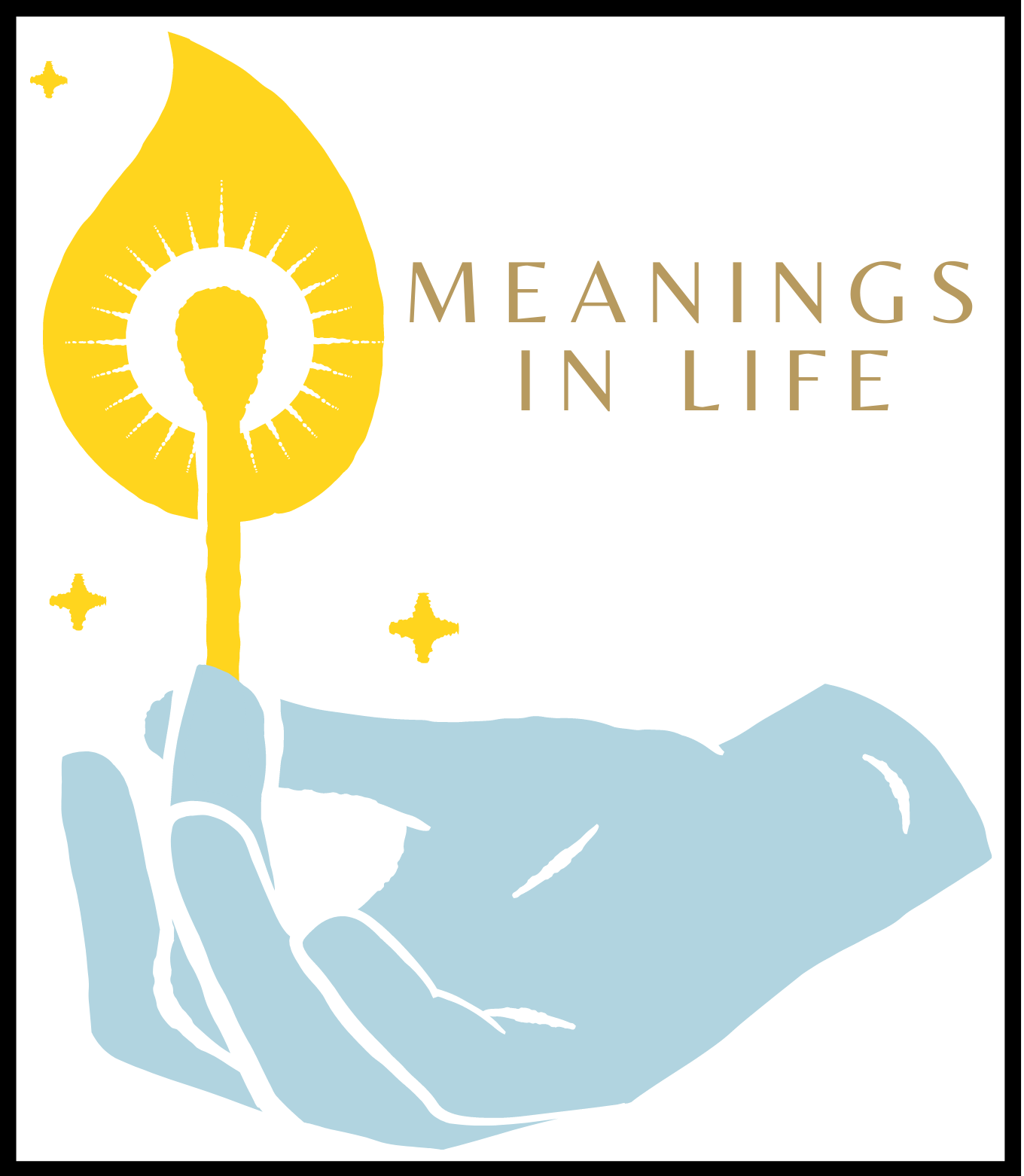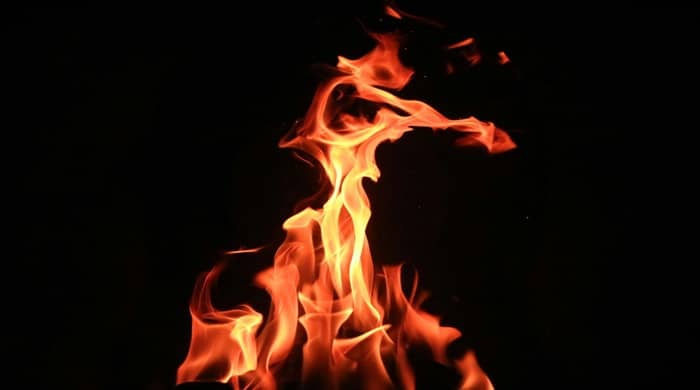The term “Ring of Fire” instantly conjures images of dazzling volcanic activity, thanks to its popular use in geology. However, within biblical contexts, this phrase takes on profound symbolic dimensions that delicately weave together themes of divine presence, judgment, and purification. It’s a concept that might seem cryptic at first glance but offers rich layers for those willing to delve beneath the surface.
Just as the ring of fire circles the Pacific Basin on Earth, reflecting a cycle of destruction and rebirth through volcanic activity and earthquakes, so too does it symbolize cycles in biblical contexts. Examining these cycles can offer deep insight into the dynamics between divine intervention and human existence.
The exploration isn’t merely an academic exercise; it’s a spiritual journey. Unraveling the meanings behind this concept can yield transformative insights which resonate deeply with our personal lives and faith journeys.
Kindling Connections: The “Ring of Fire” Meets Biblical Interpretation
When we talk about the Ring Of Fire from a biblical perspective, we’re borrowing terminology from earthly phenomena to help us understand profound spiritual realities. The Bible is replete with symbols; objects or events carry deeper meanings beyond their literal sense.
These symbols are often accompanied by fire — think burning bush, pillar of fire — indicating God’s presence or divine intervention. So what happens when we combine these potent symbols – fire and ring – into one concept?
We ignite a fascinating exploration into some core tenets of Christian faith: divine authority, eternal covenant love and apocalyptic prophecies. This connection however requires careful interpretation as it captures a delicate balance.
On one hand there’s the destructive force symbolized by fire: purifying yet annihilating; on another hand there’s resilience symbolized by ring: constant yet evolving. How do they merge in our understanding of Biblical teachings and personal spirituality?
Igniting Interpretations: A Biblical Overview of the “Ring Of Fire”
To unravel the concept of a “ring of fire” within biblical contexts, it’s important to recognize that it’s not explicitly stated in the scripture. Instead, it’s drawn from various biblical references and interpretations.
The idea is to draw from these individual instances – fire’s divine implications, ring’s powerful symbolism – and weave them into this single phrase that richly encapsulates an array of spiritual truths. This process can be challenging but also immensely rewarding.
It requires open-mindedness to connect disparate dots across numerous contexts within Bible narratives. Yet, when we approach this with patience and humility, we often discover deeper nuances that linger beneath surface-level readings.
Each analysis will necessarily be individualistic; each reader might find their unique perspective infused into how they understand the ‘ring of fire’. This fluidity is indeed one of the beauties of biblical interpretations- It allows faith to continue evolving while remaining rooted in timeless truths.
The Biblical Significance of Fire: A Beacon of Divine Presence and Power
Fire as a Divine Presence: The Burning Bush and Pillar of Fire
In the sacred texts, fire often signifies the divine manifestation of God. It has been famously associated with God’s communication with Moses through the burning bush. When Moses saw a bush engulfed in flames but not consumed, he realized he was witnessing an extraordinary phenomenon – a divine paradox if you will.
The fire signified the presence of Yahweh, demonstrating His supreme power to Moses. Moreover, fire symbolized God’s guidance throughout Israelite’s exodus from Egypt, depicted as a pillar of fire in Exodus 13:21-22.
Here again, we observe that divine presence isn’t destructive but enlightening and protective. This celestial beacon illuminated the path for Israelites during their nighttime journey through unfamiliar terrain, asserting that they were never alone.
Purification and Judgment: Sodom, Gomorrah, and Refiner’s Fire
However, biblical verses also illustrate how this elemental force represents purification or judgement when wielded by the Lord Almighty. Take for instance Genesis 19 – where “fire from heaven” rained down on Sodom and Gomorrah as divine judgment against their moral corruption; it was catastrophic yet purifying.
Similarly noteworthy is the imagery of God as a ‘refiner’s fire’ in Malachi 3:2-3 which paints a picture of God purging impurity like dross from silver or gold through trials by fiery ordeals. This metaphor emphasizes how purification often requires going through trials to eliminate what doesn’t serve us well spiritually.
Spiritual Empowerment: Pentecost and Tongues of Fire
But far from least is our consideration for Pentecost – one such momentous event where fire symbolized spiritual empowerment. In Acts 2:1-4, the Holy Spirit descended upon the apostles as tongues of fire, empowering them to communicate in different languages and spread the gospel.
This biblical occurrence was not just a manifestation of God’s power, but an empowerment of His disciples for their divine mission. Each ‘tongue of fire’ signified an individual impartation of divine power for a collective task.
It marked the birth of the Church and conveyed that God’s presence would henceforth dwell within believers through His Spirit. Fire in biblical terms carries a multi-dimensional significance – it represents God’s presence, purification process, judgment and also conveys spiritual empowerment.
The Symbolism of Rings in the Bible
Unearthing Power: Joseph’s Ring from Pharaoh
In the compelling narrative of Joseph, the symbolism related to rings is particularly noticeable. Often overlooked, this artifact carries a significant message.
It was a signet ring that Pharaoh bestowed upon Joseph, a poignant recognition of his authority. The Egyptian ruler placed his own ring on Joseph’s finger, indicating an astonishing transfer of power and status.
Joseph’s story arched from being cast into a pit by his brothers to being elevated as second only to Pharaoh in Egypt, becoming the effective prime minister. The ring was a physical reminder and visible sign of divine favor resting upon him despite harsh adversities he had faced.
Moreover, when Pharaoh gave his ring to Joseph, it symbolized not just personal authority but also societal validation and trust. It marked a shift in perception towards an externally unimposing Hebrew slave, now seen as an indispensable asset for Egypt’s survival during imminent years of famine.
Seals Of Love And Covenant: The Prodigal Son’s Ring
In one of Jesus’ most well-known parables—the Prodigal Son—a ring plays yet another meaningful role. When the wayward son returns home after squandering his inheritance, instead of rebuke or punishment from his father, he receives grace—manifested through several gifts including a robe, sandals and importantly—a ring.
This ring was much more than jewelry; it symbolically reinstated the son’s position in their family and society. Despite all mistakes made and wrongs committed by the son; love triumphed over judgment.
This act marked restoration and extended forgiveness for past transgressions. The giving of this ring also depicted covenantal love—an unconditional commitment that is unwavering despite others’ failures or faults.
Its circular shape often represents eternity—without beginning or end—in many cultures. Hence, it can be seen as a symbol of God’s enduring covenant and unbroken love for humanity, mirrored in the father’s compassion for his wayward son.
Future Foreseen: King Solomon’s Signet Ring
When being engaged with Biblical narratives about rings, one cannot overlook the story of King Solomon’s signet ring. This ring is not only a symbol of authority but also interlaced with prophecy.
According to legend, King Solomon used this ring—engraved with the ineffable name of God—to command and control supernatural beings that aided his monumental building projects. Solomon’s reign is often remembered as Israel’s golden age—a period marked by peace, prosperity, and wisdom.
His ring was emblematic of this era and spoke volumes about his divine favor. The Talmud even portrays a narrative where Solomon lost his magical signet ring and consequently his power due to prideful disobedience but later retrieved it in an act of humbling repentance—prophesizing cycles of sin, punishment, repentance, and restoration that are woven throughout human history.
Unveiling the Mysteries of the “Ring Of Fire”
A Circle’s Journey: From Ancient Symbolism to Biblical Significance
In the biblical context, a ‘circle’ is more than just a simple shape, it speaks volumes about completeness. This symbolism was deeply entrenched in ancient cultures and subsequently wove its way into biblical narratives.
The idea of perfection coupled with eternity typified by a circle resonated with their understanding of God’s character – absolute and unending. The circle was an emblem of divine attributes; its flawless symmetry mirrored the perfect nature of God and its infinite loop mirrored His eternality.
It is thus fitting that God’s creation is filled with circular symbols, from the cycle of seasons to celestial bodies like the sun and moon, all showcasing His perfection and infinite nature. Moreover, circles were seen as symbols of divine protection in biblical times.
In Zechariah 2:5 (NIV), God promises to be “a wall of fire around” Jerusalem, signifying protection through a circular formation. Thus when we see circles in biblical texts or details thereof, we understand them within this framework – indicating completeness, perfection, eternity or divine protection.
Deciphering The Enigma: Ring Of Fire
When we talk about a ‘Ring’ Of ‘Fire’, we are venturing into deep waters of Biblical interpretation. Given what each symbol signifies individually—fire suggesting purity and judgment while ring indicating completeness or protection—the combination may represent ultimate purification or divine judgement enveloped in God’s protection.
One perspective suggests that as fire purifies gold from dross (Proverbs 17:3), so too does tribulation refine human character—the metaphorical ‘Ring Of Fire’ could be viewed as transformative trials ordained by an Almighty protector who never lets us bear more than we can endure (1 Corinthians 10:13). This interpretation offers a perspective of empowerment, providing solace to those navigating life’s trials, reassuring them of their divine overseer.
Conversely, the ‘Ring Of Fire’ may embody divine judgment encased in eternal totality. The Scriptures often use fire metaphors to portray God’s judgement—for instance, Sodom and Gomorrah were consumed by divine fire as a punishment for sin (Genesis 19:24).
Thus, the ring could signify comprehensiveness or finality of this judgment. Whether seen as an emblem of purification in trials or absolute divine judgment, the ‘Ring Of Fire’ provokes awe and wonder—it reminds us that while we see “through a glass, darkly” here on earth (1 Corinthians 13:12 KJV), there is an overarching divine narrative at work that we may fully understand only when we meet our Creator face-to-face.
The “Ring Of Fire” In Apocalyptic Literature
Decoding the Inferno: The “Lake of Fire”
For those who delve into biblical apocalyptic literature, one cannot ignore the striking imagery of the “Lake of Fire” depicted in Revelation. This ominous lake serves as the ultimate destination for the devil, false prophets and those whose names are not found in the book of life. Symbolizing a divine judgment of eternal torment, its fires burns ceaselessly and unquenchably – an embodiment of eternal damnation.
The haunting image painted by John’s revelation is chillingly captivating – imagine a vast expanse filled with burning sulfur. Its metaphorical significance can’t be overstated – it’s not just a physical location but an existential state symbolizing separation from God, complete spiritual desolation and despair.
Curiously enough, despite its grim implications, the lake is also paradoxically associated with truth and righteousness – as it is God’s defined form of justice upon evil. Its finality underlines divine wrath yet at once highlights His absolute sovereignty over all creation – even over Satan himself.
Facing the Heat: The ‘Fiery Furnace’ in Daniel’s Prophecy
Transitioning to another fiery image steeped in Biblical lore – ‘The Fiery Furnace.’ This phrase originates from one of Daniel’s most intriguing prophecies. Unlike Revelation’s Lake Of Fire that signifies end-times judgement, this furnace epitomizes immediate temporal judgement meted out against blatant defiance towards God.
In this historical narrative three Hebrew men namely Shadrach, Meshach and Abednego refused to bow down to King Nebuchadnezzar’s idol and were thrown into a ‘fiery furnace’ as penalty for their insubordination. Yet they emerge unscathed – not even smelling like smoke!
The furnace becomes more than literal flames; it becomes a testament to their faith and God’s saving power. On a deeper level, the ‘Fiery Furnace’ might serve as an allegory for religious persecution.
Daniel’s compatriots faced fiery trials yet emerged untouched due to divine intervention. Their story inspires many, especially those facing adversity, with the assurance that no matter how heated our trials get, if we remain faithful, we can walk through the fires unharmed.
Case Studies on Ring Of fire Interpretation
A Multitude of Meanings: Interpreting the Ring of Fire Across Christian Denominations
The interpretive nature of sacred scriptures often lends itself to a variety of understandings, and the concept of a “ring of fire” is no exception. For instance, in Catholic tradition and theology, fire often represents purification.
The notion of Purgatory as a cleansing fire, preparing souls for Heaven, aligns with this interpretation. Consequently, some Catholics may interpret the “ring of fire” as representing God’s purifying judgment.
Evangelical Protestants typically view biblical symbols more metaphorically. They might perceive the “ring of fire” as symbolizing trials and tribulations that refine a believer’s faith – similar to gold refined in a furnace.
Meanwhile, Orthodox Christians can have yet another angle; they often place great emphasis on ‘theosis’ or divinization, where believers partake in divine nature. Hence, they might see this fiery ring as representative not only of judgment but also transformative union with God.
Within Pentecostalism known for its focus on direct personal experience with God particularly through spiritual gifts like speaking in tongues or prophecy – the “ring of fire” could be interpreted as an individual’s encounter with Holy Spirit’s empowering presence. So while interpretations may vary across denominations due to theological emphases or historical traditions within each group one thing is clear: the picture painted by this powerful biblical image is multi-faceted and deeply resonant.
Expert Insights: Perspectives from Renowned Biblical Scholars
As valuable as these denomination-based interpretations are for understanding various ways Christians can approach scriptures such as those involving our “ring of fire”, equally enlightening are viewpoints provided by seasoned biblical scholars whose life work involves diving into ancient texts and bringing them alive for modern audiences through thorough research and thoughtful analysis. Esteemed scholar Dr. James Kugel, for instance, has spent much of his career exploring how ancient interpreters have influenced later biblical understandings.
In his view, the “ring of fire” would likely be understood in light of these early interpretations. He might argue that this imagery aligns with other biblical symbols representing God’s protective and purifying presence.
On the other hand, Dr. John Walton, an expert in Old Testament and Ancient Near Eastern literature, would stress the need to understand this image against its original cultural context. Given that rings were commonly used as royal seals in the ancient world and fire often signified divine presence or action – he might interpret a “ring of fire” as indicating God’s authoritative intervention in human affairs.
Meanwhile scholars like Dr. Barbara Reid known for her work on feminist interpretations of scripture could offer a different perspective altogether by highlighting how such powerful fiery imageries can relate to women’s experiences or roles within religious narratives thereby adding another intriguing layer to our understanding of ‘ring of fire’ within biblical contexts. These scholarly insights underscore how richly textured bible interpretation can be revealing its capacity to speak into diverse perspectives and experiences across time space cultural backgrounds denominational affiliations or academic disciplines.
A Finale of Fiery Reflections
In traversing the fiery landscapes of the Bible, we’ve stumbled upon an array of illuminating insights. Fire, a powerful and purifying element, represents divine presence, judgment, and spiritual empowerment in biblical narratives.
Rings serve as potent symbols of authority and covenantal love. Thus, when we combine these two symbols into the concept of a “Ring of Fire,” we are potentially glimpsing at a representation of divine protection or judgment.
The biblical tales where fire takes center stage – from Moses’ encounter with the Burning Bush to the apocalyptic Lake of Fire in Revelation exhibit not only God’s wrath but also His saving grace. Interwoven with this is our exploration into ring symbolism, from Pharaoh’s gift to Joseph to the father’s ring for his Prodigal Son – all suggesting authority, valued relationship and promise.
Our venture into apocalyptic literature unveiled how the ‘Ring Of Fire’ could be perceived in end-time scenarios as well as its interpretation across different Christian denominations and renowned Biblical scholars. Each interpretation offering distinctive yet interconnected perspectives on this profound metaphor.
Igniting Modern-day Interpretations
Possibly one can view this metaphorical ‘Ring Of Fire’ as a symbol that continues to resonate even in our contemporary context. In times when we feel ensnared by life’s trials – whether they’re personal struggles or global crises – picturing ourselves within a protective ‘Ring Of Fire,’ shielded by divine presence can bring immense comfort. Moreover, this concept can also remind us that just as fire refines silver and gold by ridding them of impurities; likewise our tribulations might be serving to refine us spiritually; strengthening our faith like tested gold; removing dross from our lives; making us more like Christ who is depicted as a Refiner’s fire.
Furthermore, seeing rings as symbols of covenant and authority, we might be prompted to remember the covenantal promises in the Bible – God’s enduring commitment towards humanity. Just as rings are commonly used in our times to signify marital bonds – an unbroken circle symbolizing undying love and faithfulness – we can be encouraged by the constancy of divine love for us.
The Final Spark
In essence, the ‘Ring Of Fire’ presents both a challenge and encouragement. It invites us to encounter divine presence in our fiery trials while also reminding us to aspire for spiritual purity and cherish God’s unchanging promises. It prompts us to discern divine judgment not just as damning fire but also purifying flames; holy boundaries not just enclosing punishment but also protective grace.
In interpreting this metaphor, may we not only comprehend deeper biblical truths but let it shine its transformative light into our personal lives. While our exploration was rooted in Christian theology, the metaphor of ‘Ring Of Fire’ may resonate with universal experiences of struggle -, transformation – and ultimate triumph; echoing perhaps that human experience of grappling with life’s fieriness within an eternal circle of hope.
Appendix: Diving Deeper Into Biblical References
A Closer Look at ‘Fire’ in the Bible
In the Bible, fire is a multifaceted element. Its depiction ranges from divine manifestation to means of purification, and from punishment to spiritual empowerment. One of the most iconic instances happens in Exodus 3, where God appears to Moses as a burning bush, an encounter that set forth Israel’s deliverance from Egypt.
In Leviticus 9:24 (NIV), fire carries God’s approval; “Fire came out from the presence of the LORD and consumed the burnt offering and the fat portions on the altar.” Fire was also used as divine judgment by destroying cities like Sodom and Gomorrah in Genesis 19. In Numbers 11, fire also represented God’s wrath against complaints and lack of gratitude.
The New Testament continued this motif with John The Baptist prophesying about Jesus that he will baptize with Holy Spirit and fire in Matthew 3:11. And then we see tongues of flame resting on Apostles during Pentecost in Acts 2, signifying spiritual gifting.
Exploring ‘Rings’ in Biblical Narratives
The symbolism embedded within rings is no less profound than that of fire in biblical narratives. Rings often symbolize authority, covenant relationships or special recognition.
In Genesis 41:42 (NIV), Pharaoh took his signet ring off his finger and put it on Joseph’s finger – a sign of bestowing authority. This concept is echoed centuries later when King Xerxes does a similar act for Mordecai in Esther 8:2.
Rings are not only for men in power or favor; they have been used as tokens of covenant relationships too. One beautiful instance is found within Luke 15’s story about the Prodigal Son where the father gives his returned son a ring, signifying the restoration of his sonship.
And lastly, in Song of Solomon 8:6 (NIV), love is described as unyielding as the grave, its flashes are flashes of fire – a most vehement flame. Here ring might represent an everlasting covenant and fire here could symbolize ardent love.
And thus, ‘Ring Of Fire’ in this context might mean an unending passionate love or commitment. The Bible is rich with such symbols and metaphors.
As we continue exploring these themes, we uncover layers of wisdom and truth concealed within these ancient texts. Being aware of these symbols allows us to deepen our understanding and appreciation for the Bible’s literary richness and spiritual depth.




